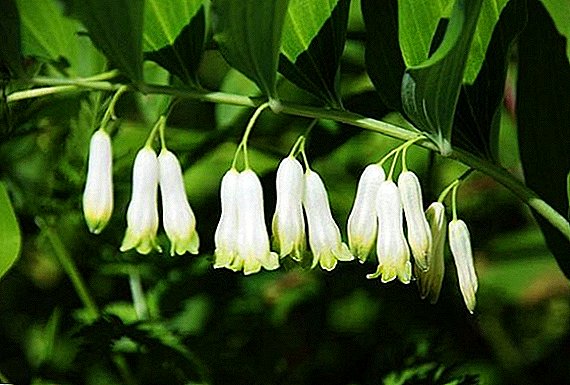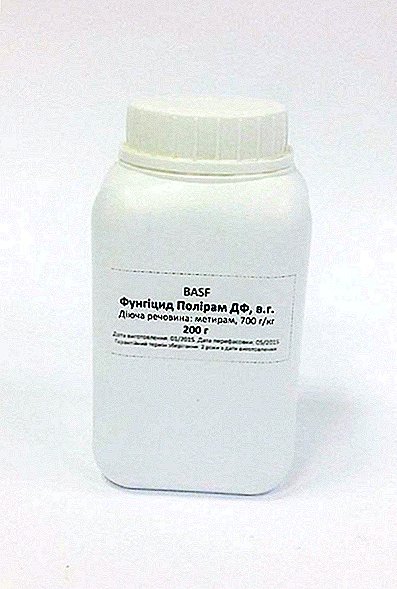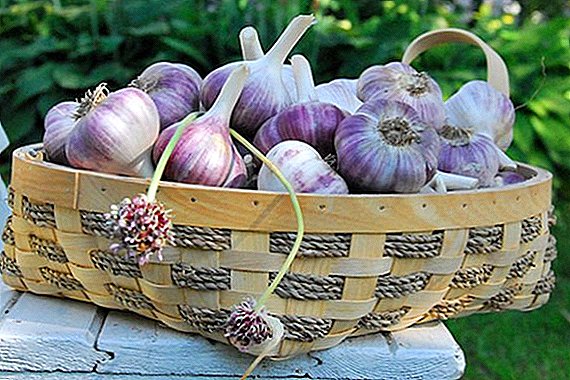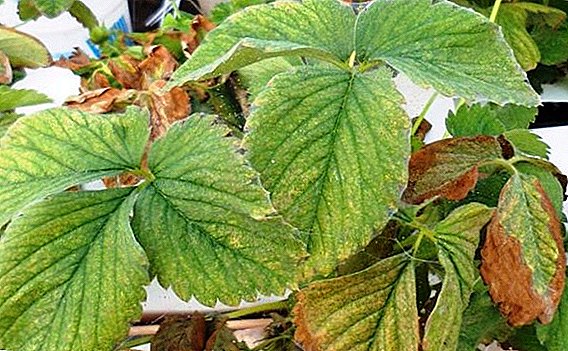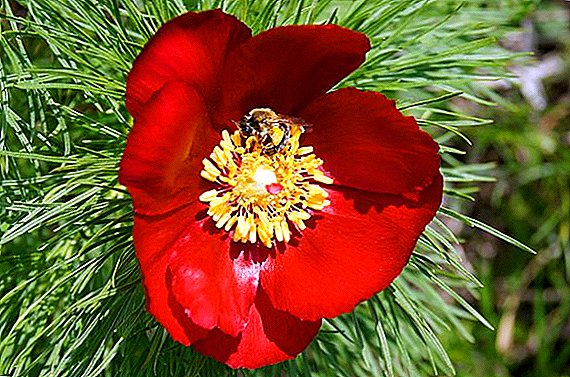
Everyone knows about the existence of sorrel. Sorrel is an early vegetable that is rich in vitamin C, carotene, minerals, organic acids.
Decorative sorrel - a spectacular-looking plant. This perennial, unpretentious in leaving, advantageously looks both in classical beds, and at formation of live borders.
Decorative sorrel cold-resistant culture. Usually such sorrel is grown as an ornamental crop, but its leaves can be eaten, most often the plant is added to soups and salads.
What kind of variety and whether it is edible?
The bush of the decorative sorrel is beautiful and without flowering - it is impossible to take a look away from large green leaves with “bloody” veins. However, the plant can not be called simply "flower", because the young leaves are quite suitable for food.
This is not quite the traditional sorrel to which everyone is used. The uniqueness of the decorative specimen is that it is slightly acidic, with a slight bitternessIt tastes like spinach. It is added to soups, salads or okroshka.
A photo
Further you will see photos of grades "Bloody Mary", "Red Veins" and "Gamma".



Appearance Description
The main feature of decorative sorrel is the contrast of "beet-red" veins and bright green leaves.
The plant itself is bushy, with good care it reaches 40-50 cm. The foliage is spear-shaped, pointed at the top. The stem is juicy and fleshy, may have a burgundy color at the bottom.
In early summer, decorative sorrel is covered with small, star-shaped flowers.collected in inflorescences. They are recommended to break off in its infancy.
And for this there are the following reasons:
- The flowers themselves are pale and inconspicuous, they only spoil the appearance of the plant.
- Peduncle takes the nutrients from the plant and, cutting it off, the spectacular leaves will be even brighter and the bushes thicker.
- After flowering, a huge number of seeds are formed, which scatter around the site and a little later sprout uncontrollably where it was not planned to grow this crop.
The main differences from other varieties
 Unlike the usual food sorrel, whose height can reach 1 meter, decorative - not more than half a meter.
Unlike the usual food sorrel, whose height can reach 1 meter, decorative - not more than half a meter.
The taste of ornamental sorrel is not as sour as that of wild-growing. It is rather neutral, grassy. In addition, only the very first milk leaves can be eaten, since adults are bitter. But decorative sorrel is much larger and fleshy than usual.
Red sorrel varieties can be planted near the pond without fear of flooding. In any other variety, the roots can rot from stagnant water, while in the decorative one, on the contrary, the leaves will only be large and brighter.
History and geography of habitat
In Russia, people did not dare to eat sorrel for a long time, since it has always been considered a common weed. German Adam Olearius, traveling to different countries, recalled that Muscovites made fun of Europeans, "eating grass."
But in the end, the Russian people also fell in love with sorrel leaves, because this is the very first spring green, very useful, with a pleasant sour taste. She turned ideal for cooking cabbage soup - originally Russian dishes.
In the wild, sorrel is found in North and South America and even in Africa. And in Russia it grows mainly in the European part, in Siberia and in the Caucasus. Cultivated same varieties can be planted anywhere in our country, and they will give at least the minimum yield, because this plant is absolutely unpretentious.
How to care in the open field?
The landing is carried out - in early spring, in April or early May. Within a couple of weeks, the seeds will sprout, and after a month and a half it will be possible to enjoy the beautiful, red-green leaves of ornamental sorrel.
Plant care is simple:
- weeding;
- watering in drought;
- fertilizing with mineral fertilizers or mullein.
The earth around the sorrel can be multiplied, but it is not necessary.
With proper care, decorative sorrel grows in one place to 4-5 years, then it must be seatedas it grows heavily.
Features home care
You can grow sorrel at home. Capacity for seedlings should be large: any wooden box will do, the main thing is that the plant should not be cramped. It is very good if a drainage of expanded clay or small stone is laid on the bottom, and peat soil is poured on top.
 Seeds can be sown dry, straight from the bag, but it is better to germinate them:
Seeds can be sown dry, straight from the bag, but it is better to germinate them:
- To do this, they are placed in a piece of gauze and pour water.
- After 2 days, healthy seeds will begin to sprout, and it is them that should be planted in a box.
It is best to place the containers with seeded decorative sorrel on the windows on the south side. So the plant will not have a lack of sunlight.
Do not allow the soil to dry out; moisture is necessary for sorrel. In overdried soil, the plants quickly form a flower stalk, which will significantly degrade the quality of the leaves.
And of course, do not forget about loosening the soil. So to the roots of the plant will be delivered a sufficient amount of oxygen.
Planting seeds and seedlings
In the ground, seeds of ornamental sorrel sown in April or early May. Landing is made to a depth of 1.5 cm, in increments of 5-8 cm. The optimal dispersion between rows is 15 cm.
The plant can be grown and seedlings. Seedlings dive in phase 2 - 3 true leaves. Sorrel tolerates transplanting well, but it is better to do it early, until the root system has grown and the plants are small.
Briefly about diseases and pests
Decorative sorrel can suffer from aphids, slugs and snails. In case of their appearance, the plant must be sprayed with insecticides: Fufanon, Aktara or Aktellik.
Sometimes sorrel is affected by rust, gray mold or various spots. In this case, the affected leaves must be urgently removed, and the plant must be treated with Bordeaux liquid.
Use in landscape design
Red decorative sorrel is very popular among landscape designers. It can be planted on an alpine slide, woven into the composition of classical flowerbeds or live borders. Also, the plant will be in demand in the now fashionable pharmaceutical gardens.
Red veins perfectly contrasted with greens near water bodies, especially since in the wet zone the leaves of sorrel grow particularly juicy and large.
Decorative sorrel confidently balances between vegetable beds and flower beds. And this makes it a universal plant, which every year will only gain popularity.



